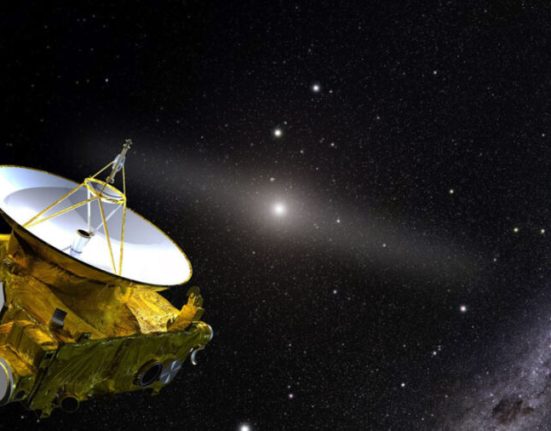As an audiophile who is always on the hunt for the next great in-ear monitor (IEM), I recently had the opportunity to compare two high-end products: the Campfire Astrolith and the Fir Audio E12. Both IEMs sit in the premium price range and offer unique features and sound signatures that cater to similar preferences. In this article, I will take an in-depth look at my experiences with both, comparing their design, comfort, sound quality, and overall value.
WHAT IS IN THE BOX
|
|
Design and build quality
The Campfire Astrolith immediately catches your eye with its Star Trek-inspired chrome design. The triangular faceplate and ergonomic housing give it a futuristic look that's sure to turn heads. However, I found the chrome finish to be a bit ostentatious and prone to fingerprints. While appearance is subjective, I personally felt it was a bit too flashy for my taste.

In contrast, the Fir Audio E12 takes a more customizable approach. Its CNC-machined grey aluminum housing serves as a blank canvas, allowing users to personalize their IEMs with removable faceplates. The stock abalone faceplate strikes a balance between ornate and organic, but the ability to swap it out is a fantastic touch, especially for a sub-$2000 IEM. This feature gives the E12 an edge in terms of aesthetics, as you can tailor its appearance to your preferences.
Comfort and fit

Both IEMs offer excellent comfort, but with slight differences. The Campfire Astrolith provides a snug, ear-hugging fit, and I found it easy to achieve a good seal after some tip movement. The cable wraps around the ear comfortably, contributing to a secure fit during extended listening sessions.
The Fir Audio E12s feel very similar to the 64 Audio IEMs in terms of fit. I noticed that the Campfire’s heavier cable fits better in the ear, while the Fir Audio’s lighter cable still allows for a good seal. In terms of comfort, I’d say these two IEMs are tied, with fit varying depending on your unique ear shape.
Driver Technology

The Campfire Astrolith employs a dual-driver planar magnetic setup, featuring a 14.2mm planar driver mated to a 6mm planar tweeter. This setup is impressive for a $2200 IEM, and I’m sure we’ll see similar designs in future Campfire products. The use of stainless steel external components and a 3D-printed AAOI polymer body contributes to its unique sound characteristics.
On the other hand, the Fir Audio E12 opts for a single 12mm electrodynamic driver. The chassis is designed around this driver to deliver deep low frequencies, while the Atom vent system extends the bass in a natural yet powerful way. I found this approach interesting as it aims to achieve speaker-like bass response in an IEM format.
Connectivity and accessories
Both IEMs come well equipped in terms of accessories. The Campfire Astrolith includes both 4.4mm and 3.5mm MMCX cables, allowing for use with various devices. Its ultra-low THD promises transparency and fast transients.
The Fir Audio E12 features the 2-pin SwapX system, which extends the life of the connection. I think this feature should be standard on any IEM over $1000, as it addresses a common failure point in expensive IEMs. The E12 also features a super-sensitive 16 ohm impedance, making it easy to drive from a phone or laptop, though a dedicated DAC or dongle will still deliver its best performance.
Low
Bass response is where these two IEMs start to diverge significantly. The Campfire Astrolith delivers deep, forward bass with good low-end extension. Listening to Dystopia’s “My Meds Aren’t Working,” I noticed how the clean guitars and bass perfectly showcase the strained bass response. It’s not the most natural timbre, but it’s great for bass lovers who don’t want to sacrifice detail.
However, this emphasis on low end can sometimes be overwhelming. On Meshuggah's “Broken Cog,” I found that the down-tuned 8-string guitars and deep kick drums could be confusing at times, clearly showing the IEM's focus on low end tuning. The emphasis on low-mids doesn't blend perfectly with every mix, but it's a welcome addition to live and acoustic tracks.

The Fir Audio E12 takes a more balanced approach to bass. It still offers deep bass, but it doesn't stand out as much as the Astrolith. I appreciated the more natural timbre in the low end, which doesn't overlap with the mid-focused sounds. Listening to “Broken Cog” again, I noticed a cleaner delivery of the low end and low drums, with nothing getting lost or muddy like it sometimes did on the Astrolith.
Media
In the midrange, I found the Fir Audio E12s to be most impressive. Vocals come through more clearly than on the Astroliths, with a warm, resonant quality. The driver offers enough clarity to give some detail to midrange vocals, guitars, synths, and drums. It’s not the most analytical sound, but that’s not the goal here.

I particularly liked how the E12 handled the guitars, giving them a great growl without sounding muddy. Listening to Def Leppard's “Photograph,” the crunchy guitars had fantastic bite and punch without dominating the mix. The timbre is above average, allowing the vocals to stand out effectively.
On the other hand, the Campfire Astrolith can sometimes struggle with its midrange presentation. I noticed that the midrange layers can become boxy at times due to an emphasis on the 400Hz to 800Hz range. Vocals can occasionally get lost depending on the instrumentation and mix. However, I found that it worked particularly well with live or acoustic recordings, which often lack bass or are mixed brighter to showcase the nuances of the performance.
Maximums
Neither of these IEMs are sibilant, which I appreciate for extended listening sessions. The Fir Audio E12 brings enough detail to emphasize the warmth of the IEM without unnaturally forcing the highs. Cymbals have an average attack but leave room for other elements in the mix. While they aren’t the most analytical highs, they are pleasant and help clarify potential muddiness in bass-heavy tracks.
The Campfire Astrolith’s treble response left me wanting a bit more clarity. While there is still detail added to the low end, some textures or nuances can sometimes be lost. To be fair, the low end here is something different than I’ve heard before. It’s a very colorful sound that will appeal to a select group of listeners. I found the cymbals to have a strong recession, making it difficult to discern the attacks of the sticks and microharmonics in the instrumentation.
Sound scene and image
Both IEMs feature a relatively intimate soundstage, which might disappoint those looking for a wide, expansive sound. The Fir Audio E12’s deep bass response can make imaging a little fuzzy at times, and I didn’t find the soundstage particularly impressive for an IEM in this price range. Sounds with a lot of reverb or delay struggled to travel, though there was a nice verticality that brought out the best in some songs.

The Campfire Astrolith performs a little better in this regard. While it shares similar issues with bass sometimes obscuring soundstage clarity, I found it to be generally more spacious and analytical thanks to its 6mm tweeter. Neither IEM offers particularly impressive holographic qualities, though.
I tested both IEMs with different sources, including the iFi go-bar and the iBasso D16. With the go-bar, I found the soundstage to be a bit too shallow, while the D16 provided better width but might be overkill for these sensitive IEMs. Considering that most users will likely pair them with small portable amps or adapters, the somewhat disappointing soundstage performance is worth noting.
Conclusion
After extensive testing, I've come to appreciate both the Campfire Astrolith and the Fir Audio E12 for their unique qualities. The Campfire Astrolith will appeal to bass enthusiasts who want a fun, engaging listen without completely sacrificing detail. Its futuristic design is sure to turn heads, though some may find it a bit too flashy.
On the other hand, the Fir Audio E12 offers a more balanced approach with excellent midrange performance and customizable aesthetics. Its more natural bass response and clear vocal presentation make it a versatile choice for various genres.
Ultimately, the choice between these two IEMs will come down to personal preference. If you’re a bass lover who enjoys a colored sound signature and doesn’t mind a more intimate soundstage, the Campfire Astrolith may be your perfect choice. However, if you prefer a more balanced sound with excellent midrange clarity and the ability to customize the look of your IEMs, the Fir Audio E12 may be the better choice.
Both IEMs represent the highest level of personal audio technology and showcase what is possible in the world of portable high-fidelity sound. While they may not be perfect, each offers unique listening experiences that will satisfy the most discerning audiophiles looking for something special in their next IEM purchase.













Leave feedback about this